Do you have a question about the Komatsu WA70-5 and is the answer not in the manual?
Provides guidance on safe operation and maintenance, listing manual contents.
Details CE marking requirements and applied European standards for machine conformity.
Explains safety instructions, warnings, and symbols used in the manual.
Further introduction to the machine, covering intended use and breaking-in procedures.
Identifies the locations of various machine identification and serial number plates.
Covers essential safety instructions, devices, clothing, and machine modifications.
Details safety measures for workplace, driver's cab, and machine operation.
Outlines safety procedures and precautions before, during, and after maintenance.
Shows positions and order numbers of all safety labels on the machine.
Provides an overview of the machine and its controls and indicators.
Details individual components like the instrument panel, switches, and control levers.
Covers pre-start checks, engine starting, driving, and work equipment operation.
Provides instructions and precautions for towing the machine safely.
Explains the procedure and safety precautions for jump-starting the engine.
Guides on checking service and parking brake functions for insufficient effect.
Describes steering behavior when the engine is not running.
Details the procedure for lowering the work attachment in an emergency.
Lists common faults and remedies for electrical, engine, hydraulic, and brake systems.
Provides general guidelines and safety precautions for performing maintenance work.
Covers oil, fuel, coolant specifications, electrical system, and wearing parts.
Lists recommended lubricants, fuels, and their filling capacities for various machine systems.
Details recommended tools and standard torque values for bolts and nuts.
Specifies safety-related parts requiring periodic replacement for safe operation.
Provides a schedule for all maintenance operations based on operating hours.
Details specific maintenance tasks and procedures for various intervals.
Presents performance specifications, engine details, and dimensions of the machine.
Indicates the machine's noise emission levels according to ISO and EC directives.
Specifies vibration levels transmitted from the operator's seat based on ISO standards.
Defines the maximum allowable slope angles for safe machine operation.
Details the structure, function, operation, and precautions for the E.C.S.S. system.
Provides guidance on safe operation and maintenance, listing manual contents.
Details CE marking requirements and applied European standards for machine conformity.
Explains safety instructions, warnings, and symbols used in the manual.
Further introduction to the machine, covering intended use and breaking-in procedures.
Identifies the locations of various machine identification and serial number plates.
Covers essential safety instructions, devices, clothing, and machine modifications.
Details safety measures for workplace, driver's cab, and machine operation.
Outlines safety procedures and precautions before, during, and after maintenance.
Shows positions and order numbers of all safety labels on the machine.
Provides an overview of the machine and its controls and indicators.
Details individual components like the instrument panel, switches, and control levers.
Covers pre-start checks, engine starting, driving, and work equipment operation.
Provides instructions and precautions for towing the machine safely.
Explains the procedure and safety precautions for jump-starting the engine.
Guides on checking service and parking brake functions for insufficient effect.
Describes steering behavior when the engine is not running.
Details the procedure for lowering the work attachment in an emergency.
Lists common faults and remedies for electrical, engine, hydraulic, and brake systems.
Provides general guidelines and safety precautions for performing maintenance work.
Covers oil, fuel, coolant specifications, electrical system, and wearing parts.
Lists recommended lubricants, fuels, and their filling capacities for various machine systems.
Details recommended tools and standard torque values for bolts and nuts.
Specifies safety-related parts requiring periodic replacement for safe operation.
Provides a schedule for all maintenance operations based on operating hours.
Details specific maintenance tasks and procedures for various intervals.
Presents performance specifications, engine details, and dimensions of the machine.
Indicates the machine's noise emission levels according to ISO and EC directives.
Specifies vibration levels transmitted from the operator's seat based on ISO standards.
Defines the maximum allowable slope angles for safe machine operation.
Details the structure, function, operation, and precautions for the E.C.S.S. system.
| Brand | Komatsu |
|---|---|
| Model | WA70-5 |
| Category | Front End Loaders |
| Language | English |
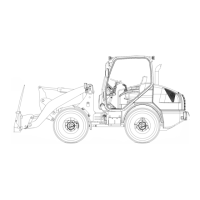
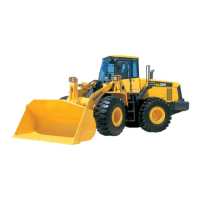
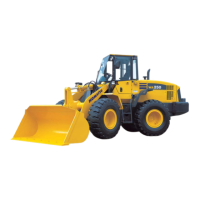
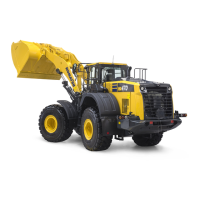
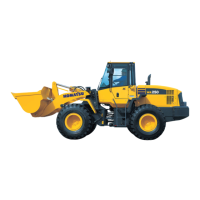
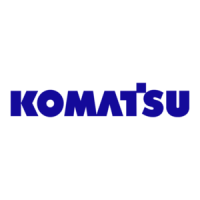

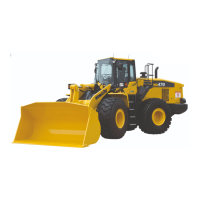
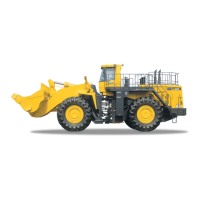

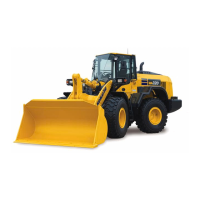
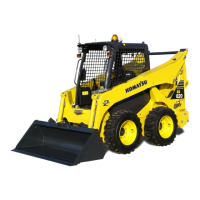
